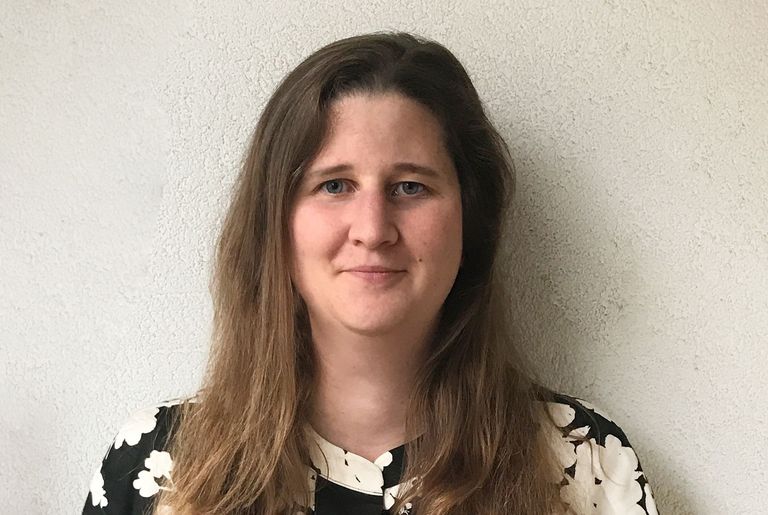Prix Schläfli Chemie 2023 - Vortragsreihe & Preisverleihungszeremonie
Michelle Frei, Gewinnerin des Prix Schläfli Chemie 2023 wird die Auszeichnung an ihrer Alma Mater EPFL empfangen und ihre Arbeit während einer Vortragsreihe an verschiedenen Institutionen der Schweiz präsentieren.

Prof. Dr. Michelle Frei
Prix Schläfli Chemie Gewinnerin 2023.
Sie promovierte bei Prof. Dr. Kai Johnsson an der Eidgenössischen Technischen Hochschule Lausanne und am Max-Planck-Institut für medizinische Forschung in Heidelberg und wird mit diesem Preis für ihre Erkenntnisse im Rahmen ihrer Dissertation über leuchtende Zellen geehrt. Sie ist derzeit Postdoktorandin an der University of California, San Diego, USA, und wird demnächst eine Tenure Track-Assistenzprofessur für Chemische Biologie und Molekulare Bildgebung im Departement für Chemie und Angewandte Biowissenschaften der ETH Zürich antreten.
Vortragsreihe
Prof. Dr. Michelle Frei wird an verschiedenen Institutionen in der Schweiz einen Vortrag über "Chemigenetic tools for live-cell fluorescence microscopy" halten. Vorläufige Daten und Zeiten:
- Montag, 25.09.2023, 16:30 an der UniBE, Raum S 559. Gastgeberin: Prof. Dr. Natalie Banerji
- Dienstag, 26.09.2023, 16:30 Uhr an der UZH. Gastgeberinnen: Prof. Dr. Nina Hartrampf/Prof. Dr. Alexandria Liang
- Mittwoch, 27.09.2023, 17:15 an der UniFR, GA PER10 0.013. Gastgeber: Prof. Dr. Fabio Zobi
- Donnerstag, 28.09.2023, 16:15-18:00 an der EPFL, room CO3. Präsentation und offizielle Preisverleihung. Gastgeber: Prof. Dr. Beat Fierz
- Freitag, 29.09.2023, 10:45 Uhr an der UniBS im kleinen OC Vorlesungssaal am St. Johanns-Ring 19, Basel. Gastgeberin: Prof. Dr. Murielle Delley
- Montag, 02.10.2023, 13:00 an der UniGE, Raum 1S081 (Untergeschoss des Science3 Gebäudes). GastgeberInnen: Prof. Dr. Aurélien Roux/Prof. Dr. Robbie Loewith
Zusammenfassung:
Self-labeling protein tags have become critical tools in fluorescence microscopy. Their use in combination with fluorogenic fluorophores, which only become fluorescent when bound to their protein target, makes them particularly suitable for live-cell applications. The increase in fluorescence observed upon labeling and the photophysical properties of the fluorophore are mainly determined by the protein surface near the fluorophore binding site. However, most effort has been invested in the development of new fluorophores and little attention has been paid to the engineering of the self-labeling protein tag.
Here, we report on the engineering of HaloTag7 to modulate the photophysical properties of the bound rhodamines. Specifically, we developed a series of new HaloTag variants with altered brightness and lifetime properties in comparison to HaloTag7. The generated HaloTag variants are labeled with a single fluorophore but show distinct fluorescence lifetimes. This renders them distinguishable by fluorescence lifetime imaging microscopy (FLIM), enabling live-cell multiplexing of three targets in one spectral channel. Fluorescence lifetime multiplexing previously required the fastidious investigation of the fluorescence lifetime of each fluorophore. The introduced HaloTag series simplifies this task tremendously offering the first generalized strategy to create lifetime contrast in living cells. Additionally, we used the differences in fluorescence lifetime to generate a chemigenetic fluorescence lifetime based biosensor to monitor cell cycle progression.
Overall, our work highlights that the combination of protein engineering and chemical synthesis can generate imaging tools with outstanding properties. We expect the HaloTag series will facilitate the widespread use of FLIM and enable researchers to increase the number of targets measured simultaneously. This will ultimately enhance our understanding of multifactorial biological processes.
Award ceremonies Prix Schläfli
- Award ceremony for the Prix Schläfli Biology 2023
- Award Ceremony for the Prix Schläfli Geosciences 2023
- Award Ceremony for the Prix Schläfli in Astronomy 2023
- Prix Schläfli Chemie 2023 - Vortragsreihe & Preisverleihungszeremonie
- Award ceremony for the Prix Schläfli Biology 2022
- Award ceremony for the Prix Schläfli Geosciences 2022
- Prix Schläfli in Chemistry | Mini Symposium & Award Ceremony
- Award Ceremony for the Prix Schläfli Physics 2022
- Award ceremony for the Prix Schläfli Biology 2021
- Award ceremony for the Prix Schläfli Chemistry 2020
- Award ceremony for the Prix Schläfli Geosciences 2021
- Award ceremony for the Prix Schläfli Astronomy 2020
- Award ceremony for the Prix Schläfli Mathematics 2021
- Award ceremony for the Prix Schläfli Biology 2020
- Award ceremony for the Prix Schläfli Geosciences 2020
- Award ceremony for the Prix Schläfli Chemistry 2019
- Award ceremony for the Prix Schläfli Biology 2019
- Award ceremony for the Prix Schläfli Geosciences 2019
- Award ceremony for the Prix Schläfli Physics 2019
